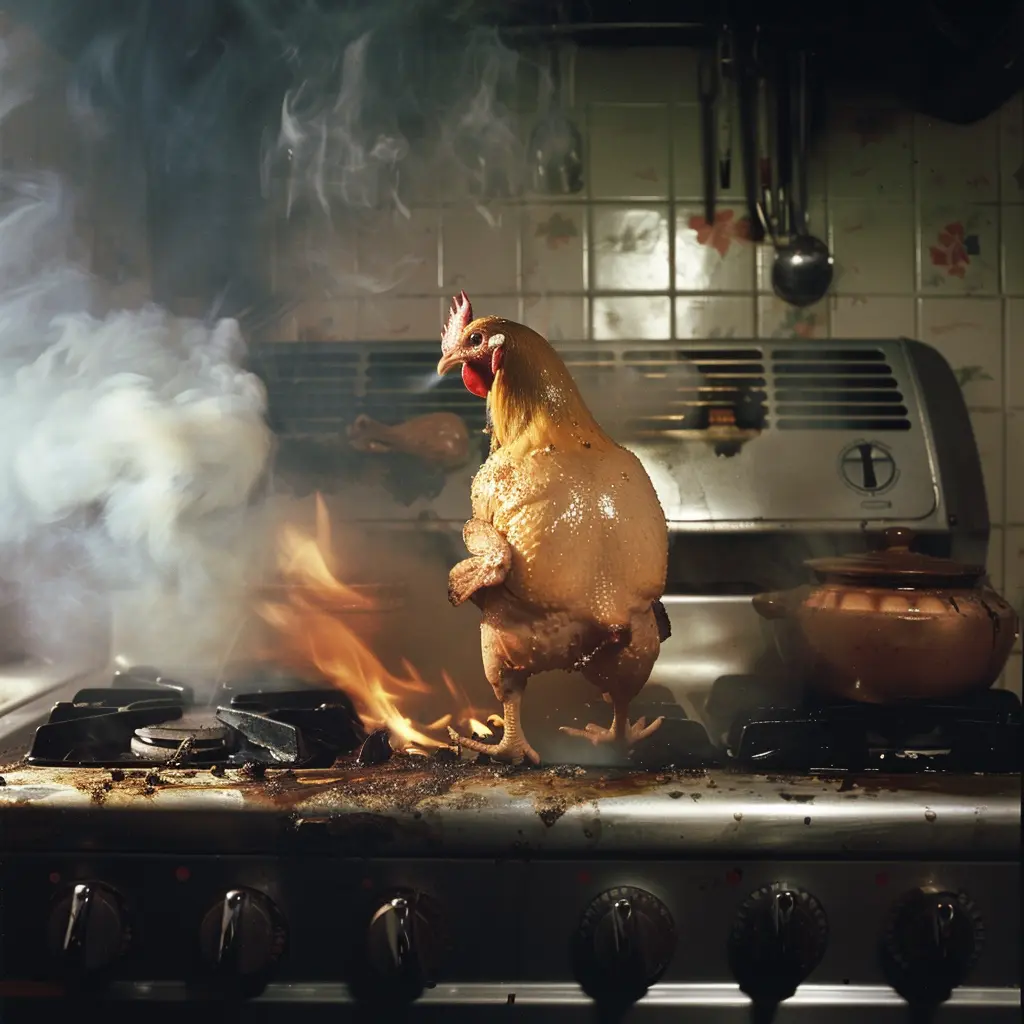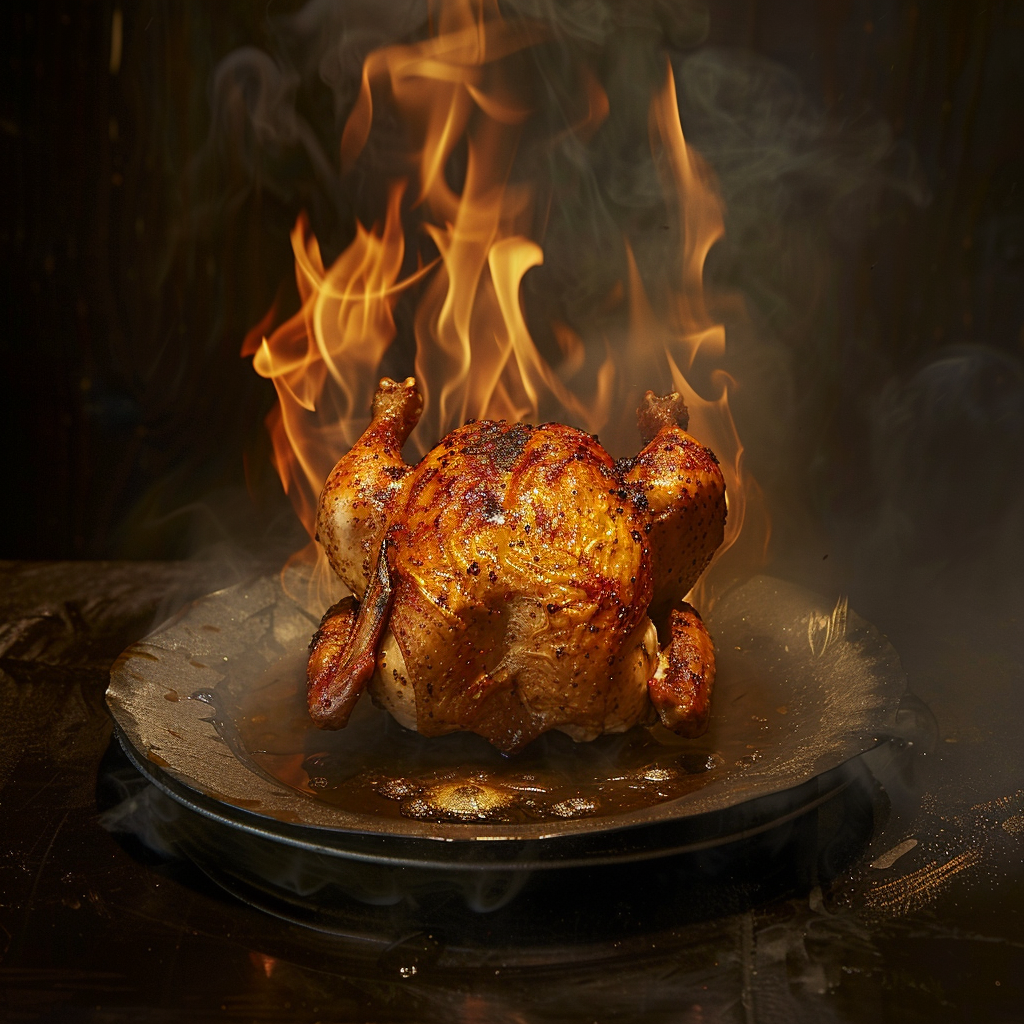Introduction: Is Baking Chicken at 350°F or 400°F Better?
Baking chicken perfectly hinges on understanding and controlling the oven temperature. This crucial factor not only ensures that the chicken cooks through safely but also affects the texture, flavor, and overall quality of the dish. The right temperature can mean the difference between a dry, tough meal and a juicy, flavorful feast. Navigating through the myriad of recommended temperatures for different cuts and preparations of chicken can be a daunting task for both novice and experienced cooks alike. This guide aims to demystify the importance of baking temperature for chicken and provide a comprehensive overview of the most common temperatures used in recipes. By mastering these elements, home cooks can elevate their cooking skills and enjoy consistently better results in their kitchen endeavors.
Importance of Baking Temperature for Chicken
Understanding the importance of the correct baking temperature for chicken is essential for achieving optimal results. The right temperature ensures that the chicken is cooked thoroughly, eliminating harmful bacteria, while also preserving its moisture and enhancing its flavor. It’s a balancing act where the temperature must be high enough to cook the chicken through but not so high that it dries out or burns.
Overview of Common Baking Temperatures
Chicken can be baked at a variety of temperatures depending on the desired outcome and the specific cut of the meat. Common temperatures range from 325°F (165°C) to 450°F (232°C). Lower temperatures are typically used for slow-roasting whole chickens or baking delicate cuts like breasts to keep them moist. Higher temperatures are ideal for achieving a crispy skin on wings or drumsticks and for cooking cut pieces quickly and evenly.
Understanding Baking Temperatures

The temperature at which you bake chicken impacts not just the safety and edibility of your food but also its texture and flavor profile. Managing oven temperature effectively is key to successful cooking, ensuring that every dish meets both food safety standards and your personal taste preferences.
Why Baking Temperature Matters for Chicken?
The baking temperature directly influences several aspects of cooking chicken, including cooking time, texture, and flavor. A higher temperature will cook the chicken faster but can also result in a drier texture if not monitored carefully. Conversely, a lower temperature will slow down the cooking process, allowing the chicken to retain more moisture and develop flavors more fully, but it also requires more patience and time.
The Science Behind Heat and Cooking
At the molecular level, heat affects the proteins in chicken meat. As the temperature rises, these proteins denature and reconfigure, which can either make the meat tender or tough. Understanding this process helps in choosing the right temperature for the desired outcome. Enzymatic reactions and fat rendering also play significant roles in flavor development, with different temperatures activating or deactivating these reactions. Thus, the science of heat in cooking is a fascinating study of chemistry and physics, directly applicable to everyday cooking practices.
Baking Chicken at 350°F
Baking chicken at 350°F (177°C) is a widely recommended and practiced method, especially suited to achieving evenly cooked, moist poultry. This moderate temperature strikes a balance between the high and low extremes, making it a go-to for many recipes and cooking styles. It offers a range of benefits while also presenting some limitations, depending on the desired outcome and the specific chicken dish being prepared.
Benefits of Baking at 350°F
Moisture Retention: One of the prime advantages of baking chicken at 350°F is the retention of moisture. This temperature is high enough to cook the chicken thoroughly but gentle enough to prevent excessive moisture loss, which is crucial for keeping the meat juicy and tender.
Even Cooking: Baking at 350°F ensures that the heat penetrates slowly and evenly, which is particularly beneficial when cooking thicker cuts like whole chickens or large thighs. This even distribution of heat helps prevent the exterior from burning before the interior reaches the safe cooking temperature.
Ideal Dishes for 350°F Baking
Whole Chickens: Baking a whole chicken at 350°F is ideal because it allows the heat to reach the deeper tissues slowly, ensuring that every part from the breast to the thighs cooks evenly without drying out the outer layers.
Chicken Thighs: Chicken thighs, known for their richer flavor and higher fat content compared to breasts, are particularly well-suited to baking at 350°F. This temperature renders their fat slowly, enhancing flavor while maintaining a tender texture.
Drawbacks of Lower Temperature Cooking
Longer Cooking Times: While 350°F is effective for even and gentle cooking, it does require longer in the oven compared to higher temperatures. This can be a drawback for those needing a quicker meal solution or when cooking under time constraints.
Skin Crispiness: For enthusiasts of crispy skin, baking at 350°F might not always meet expectations. The moderate temperature might not be sufficient to achieve that perfectly crisp skin found in recipes that call for higher temperatures or broiling. For crisper skin, additional steps such as broiling at the end of cooking or adjusting the temperature might be necessary.
Baking Chicken at 400°F
Baking chicken at 400°F (204°C) is a popular method for those who prefer their chicken to have a crispy skin and a reduced cooking time. This higher temperature setting offers significant advantages, especially for certain cuts of chicken and specific dishes that benefit from a quick roast. However, it also comes with some challenges, particularly for larger cuts or whole chickens.
Benefits of Baking at 400°F
Crispier Skin: One of the most desirable outcomes of baking chicken at 400°F is achieving a beautifully crispy skin. The higher temperature allows the skin to render fat quickly and crisp up without having to overcook the meat inside.
Shorter Cooking Time: Higher temperatures translate to faster cooking. This is particularly beneficial when preparing a meal on a tight schedule. Chicken cooked at 400°F will reach the safe internal temperature quicker than at lower settings, making it a convenient choice for busy cooks.
Ideal Dishes for 400°F Baking
Chicken Breasts: Chicken breasts, particularly when skin-on, are excellent for baking at 400°F. The high heat helps to seal in the juices quickly, cooking the meat thoroughly while maintaining moisture and enhancing the outer texture with a slight crispiness.
Wings and Drumsticks: These smaller pieces are ideal for high-temperature baking. Wings and drumsticks have enough natural fat to remain moist under high heat, and the 400°F temperature crisps the skin perfectly while keeping the inside tender and juicy.
Drawbacks of Higher Temperature Cooking
Risk of Drying Out: While the high heat can create a delicious crispy exterior, there is a greater risk of drying out the meat, especially for leaner cuts like chicken breasts. Careful timing and potentially using marinades or brines can help mitigate this issue.
Uneven Cooking for Larger Pieces: Larger pieces, such as whole chickens or thick roasts, can be challenging to cook evenly at 400°F. The exterior may become overly browned or crispy before the interior reaches the desired doneness, leading to unevenly cooked meat that might require additional cooking strategies to remedy.
Comparative Analysis
The choice between baking chicken at 350°F and 400°F can affect various aspects of the dish, from texture and flavor to nutritional content. Understanding these differences can help home cooks make more informed decisions based on their specific preferences and dietary needs.
Texture Differences
At 350°F, chicken tends to have a more tender and moist texture, as the lower temperature allows the chicken to cook more gradually, preserving its natural juices. This gentle cooking is ideal for larger cuts or whole chickens, which require thorough cooking without the exterior drying out.
In contrast, 400°F provides a firmer texture and a crisper skin, which is appealing for those who enjoy a slight crunch to their chicken. The higher temperature causes fats and juices to cook off more quickly, which can reduce moisture but increase textural contrast, especially in smaller, fattier cuts like wings and drumsticks.
Flavor Differences
Cooking chicken at 350°F often results in a subtler flavor, as the lower temperature allows for more gradual development of flavors, especially when herbs, spices, or marinades are used. The meat is likely to taste more natural and retain more of its original flavor profile.
Meanwhile, 400°F can enhance flavor intensity, especially for skin-on pieces, as the higher temperature leads to more caramelization and Maillard reactions, providing a richer, more robust taste. This method might also allow for more creative seasoning opportunities as the flavors can become more concentrated.
Nutritional Content Analysis
The nutritional content of chicken can vary slightly based on the cooking temperature. Baking at 350°F might preserve more of the chicken’s natural proteins and some sensitive vitamins due to the gentler cooking process. Conversely, baking at 400°F might result in a slight reduction of certain nutrients due to the higher heat and faster cooking, but this is often minimal and generally not a significant concern for most dietary needs.
Expert Opinions
Quotes from Chefs
Many chefs recommend adjusting baking temperatures based on the cut of the chicken and the desired outcome. “Cooking at 350°F is ideal for juiciness and tenderness, especially for whole chickens,” one chef notes, highlighting the benefits for larger meals. Another chef prefers 400°F for smaller cuts: “For a dinner that impresses with crispiness and flavor, 400°F is your best bet, especially for wings and drumsticks.”
Recommendations from Food Scientists
Food scientists often focus on the safety and efficiency of cooking temperatures. One scientist explains, “Baking at 400°F can reduce the risk of foodborne pathogens due to the higher internal temperatures reached more quickly.” Another points out that “maintaining moisture at 350°F can also mean retaining more thermal-sensitive nutrients, making it a healthier choice depending on the preparation.”
Recipe Examples

Recipe for Chicken Baked at 350°F
Ingredients:
- 1 whole chicken (about 3-4 lbs)
- 2 tbsp olive oil
- 1 tsp salt
- 1/2 tsp black pepper
- 1 lemon, halved
- Fresh herbs (thyme, rosemary, parsley)
Instructions:
- Preheat your oven to 350°F.
- Rub the chicken with olive oil and season inside and out with salt and pepper.
- Stuff the cavity with lemon halves and a bouquet of fresh herbs.
- Place the chicken in a roasting pan and bake for 1 hour 20 minutes, or until the internal temperature reaches 165°F.
- Allow the chicken to rest before carving.
Recipe for Chicken Baked at 400°F
Ingredients:
- 4 chicken breasts, bone-in and skin-on
- 2 tbsp olive oil
- 1 tsp garlic powder
- 1 tsp smoked paprika
- Salt and pepper to taste
Instructions:
- Preheat your oven to 400°F.
- Coat the chicken breasts with olive oil and season with garlic powder, smoked paprika, salt, and pepper.
- Arrange on a baking sheet and bake for 25-30 minutes, or until the internal temperature reaches 165°F and the skin is crispy.
- Allow the chicken to sit for a few minutes after cooking so the juices can settle back throughout the meat.
These recipes showcase how different temperatures can suit various preparations, aligning the cooking method with the desired meal experience.
Tips for Perfect Baking
How to Choose the Right Temperature
Choosing the right baking temperature for chicken depends largely on the cut of the meat and the desired final texture. For juicier, more tender meat, lower temperatures like 350°F are ideal, especially for whole chickens or larger cuts. If you’re after a crispier skin and a shorter cooking time, 400°F is better suited, particularly for smaller cuts like breasts, wings, and drumsticks.
Techniques for Ensuring Even Cooking
To ensure even cooking, consider the following techniques:
- Preheat your oven to allow for an even start to cooking.
- Positioning: Place the chicken in the center of the oven, and use a roasting rack to allow heat to circulate evenly.
- Rotation and flipping: For pieces, flip them halfway through the baking time to promote an even cook.
- Basting: Keep the chicken moist by basting it periodically with its own juices or a marinade.
Common Mistakes to Avoid When Baking Chicken
Overcooking and Undercooking
One of the biggest mistakes in baking chicken is not cooking it to the correct temperature, leading to either overcooked, dry meat or undercooked, potentially unsafe meat. Always aim for an internal temperature of 165°F.
The Importance of Using a Meat Thermometer When Baking Chicken
The use of a meat thermometer cannot be overstated; it’s essential for ensuring your chicken reaches the safe internal temperature of 165°F without overcooking.
FAQ Section: Everything You Need to Know About Baking Chicken
How long does it take to cook chicken at 350 degrees in the oven?
Typically, a whole chicken needs about 20 minutes per pound at 350°F, plus an additional 15 minutes.
How long should you bake chicken at 400 degrees?
Chicken breasts or thighs usually take about 20-30 minutes at 400°F, depending on their size.
Is it better to cover chicken when baking?
Covering chicken with foil can help prevent it from drying out and create a steaming effect, which is beneficial for keeping it moist. For crispier skin, bake uncovered.
Will baking chicken at 350 dry it out?
Baking chicken at 350°F is less likely to dry it out compared to higher temperatures, as long as it’s not overcooked. Keeping a close eye on the internal temperature is key.
Conclusion: Optimal Temperatures for Baking Chicken
Choosing the right temperature and cooking techniques can significantly impact the quality of your baked chicken. For tender, juicy meat, 350°F works well, particularly for whole chickens or larger cuts. For crispier, quicker-cooked chicken, 400°F is ideal, especially for smaller cuts. Always use a meat thermometer to ensure safety and avoid common mistakes like overcooking or uneven cooking.
